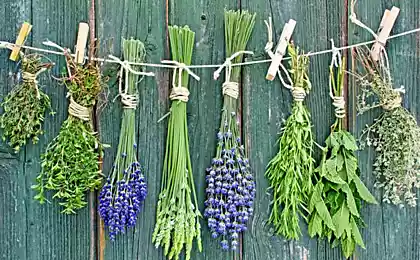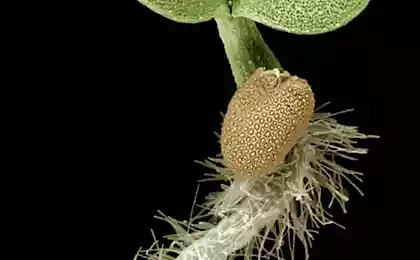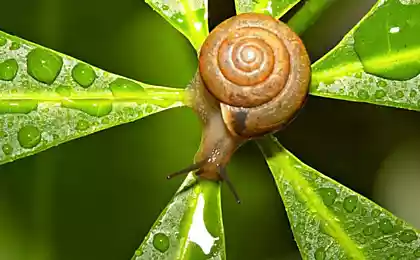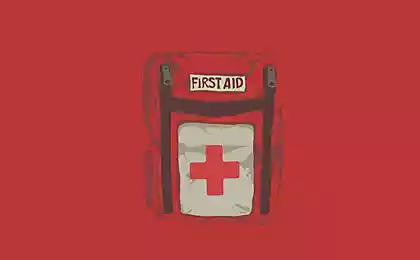426
Stealing beauty. 5 plants, which may not see our grandchildren
Many species of animals is today on the verge of extinction. The same situation exists in the plant world. Learn about some rare plants — sometimes their number reaches a few dozen copies.
1. Attenborough nepenthes (Nepenthes attenboroughii) is growing in the Philippine island of Palawan and on the slopes of mount Victoria. This shrub grows to a height of 1.5 meters and feeds on insects that fall into his trap shaped like a pitcher. The average size of the "jug" — about 25 cm long and 12 cm wide. The largest of the found "pitchers" of plants of this species had a volume of 1.5 liters is the most spacious trap among carnivorous plants. There were cases, when such capacity was to small rodents.

According to the classification of the International Union for conservation of nature, nepenthes Attenborough is an endangered species — due to the small area of its distribution, combined with poaching.
2. Growing only in the area Analalava in the North-West of Madagascar palm Tahina has an alternative name: "palm-suicide". With a height of about 18 meters is the largest palm tree on the island. Almost all the time life Tahina spectabilis fruit, blossoming just before his death around the age of 30-50 years. The process of fruiting of the plant takes too much energy, and after completing it, it completely dries up and collapses.

In 2012 the species Tahina spectabilis received the status of a species on the verge of extinction, according to the classification of the International Union for conservation of nature. Slow of its own reproduction, a significant active threat is deforestation of the jungle and forest fires. According to data for 2012, Madagascar grew only 30 adults "palm-suicides".
3. A member of the Orchid family , rhizanthella Gardner (Rhizanthella gardneri) is different from other orchids that lives under the ground. Flowering period is from may to June; inflorescence contains from 8 to 90 maroon flowers, exuding a smell of formalin.

Because the plant can't draw energy from sunlight, it feeds as a parasite on it mushrooms. Rhizanthella Gardner refers to the species on the brink of extinction: this endemic of Western Australia represented only 50 colonies.
4. Medusagyne soprotivlyatsya (Medusagyne oppositifolia) is the only representative of the family Medusagyne (Medusagynaceae). The name of the plant due to the resemblance of the fruit to Medusa. Tree, reaching a height of 9 meters, is found only on the Seychelles island of Mahe, where it grows in inaccessible rock crevices. It was considered extinct until it was re-opened in 1970-ies. Currently, there are 90 adult trees, and many of them have lost the ability to fruit.

5. Mammillaria Herrera (Mammillaria herrerae) cactus of the genus Mammillaria, in the wild can be found only in the vicinity of the city Cadereyta Mexican state of Queretaro. His miniature, up to 3.5 cm in diameter, stem at flowering time is covered with red or pink flowers with a size of about 2.5 cm, Beautiful and easy to care for cactus became extremely popular among fans of indoor plants. As a result, over the last 20 years the number of decoratetoday of Mammillaria Herrera has decreased by 90%.published

P. S. And remember, only by changing their consumption — together we change the world! ©
Source: www.nat-geo.ru/nature/630491-uskolzayushchaya-krasota-5-rasteniy-kotorykh-mogut-ne-uvidet-nashi-vnuki/#full
1. Attenborough nepenthes (Nepenthes attenboroughii) is growing in the Philippine island of Palawan and on the slopes of mount Victoria. This shrub grows to a height of 1.5 meters and feeds on insects that fall into his trap shaped like a pitcher. The average size of the "jug" — about 25 cm long and 12 cm wide. The largest of the found "pitchers" of plants of this species had a volume of 1.5 liters is the most spacious trap among carnivorous plants. There were cases, when such capacity was to small rodents.

According to the classification of the International Union for conservation of nature, nepenthes Attenborough is an endangered species — due to the small area of its distribution, combined with poaching.
2. Growing only in the area Analalava in the North-West of Madagascar palm Tahina has an alternative name: "palm-suicide". With a height of about 18 meters is the largest palm tree on the island. Almost all the time life Tahina spectabilis fruit, blossoming just before his death around the age of 30-50 years. The process of fruiting of the plant takes too much energy, and after completing it, it completely dries up and collapses.

In 2012 the species Tahina spectabilis received the status of a species on the verge of extinction, according to the classification of the International Union for conservation of nature. Slow of its own reproduction, a significant active threat is deforestation of the jungle and forest fires. According to data for 2012, Madagascar grew only 30 adults "palm-suicides".
3. A member of the Orchid family , rhizanthella Gardner (Rhizanthella gardneri) is different from other orchids that lives under the ground. Flowering period is from may to June; inflorescence contains from 8 to 90 maroon flowers, exuding a smell of formalin.

Because the plant can't draw energy from sunlight, it feeds as a parasite on it mushrooms. Rhizanthella Gardner refers to the species on the brink of extinction: this endemic of Western Australia represented only 50 colonies.
4. Medusagyne soprotivlyatsya (Medusagyne oppositifolia) is the only representative of the family Medusagyne (Medusagynaceae). The name of the plant due to the resemblance of the fruit to Medusa. Tree, reaching a height of 9 meters, is found only on the Seychelles island of Mahe, where it grows in inaccessible rock crevices. It was considered extinct until it was re-opened in 1970-ies. Currently, there are 90 adult trees, and many of them have lost the ability to fruit.

5. Mammillaria Herrera (Mammillaria herrerae) cactus of the genus Mammillaria, in the wild can be found only in the vicinity of the city Cadereyta Mexican state of Queretaro. His miniature, up to 3.5 cm in diameter, stem at flowering time is covered with red or pink flowers with a size of about 2.5 cm, Beautiful and easy to care for cactus became extremely popular among fans of indoor plants. As a result, over the last 20 years the number of decoratetoday of Mammillaria Herrera has decreased by 90%.published

P. S. And remember, only by changing their consumption — together we change the world! ©
Source: www.nat-geo.ru/nature/630491-uskolzayushchaya-krasota-5-rasteniy-kotorykh-mogut-ne-uvidet-nashi-vnuki/#full
A breakthrough in the field of landscape design — PrintGREEN
The most influential books of the twentieth century




















